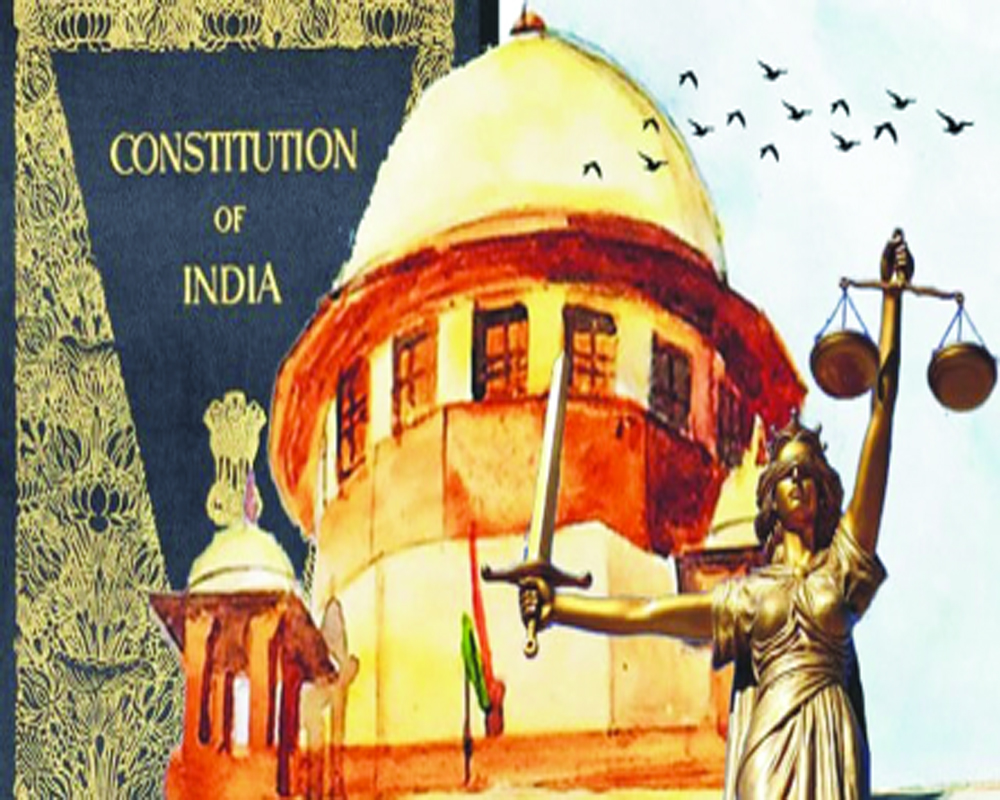A flashback into the history of law of sedition and Article 19(2) of the Constitution will be enough to show the somersaults the Congress has made on the subject
The Supreme Court is seized of a bunch of petitions challenging the law of sedition, effectually tasked with reviewing a five-bench judgment in the landmark Kedarnath case where in it had upheld its constitutionality. The law of sedition is enacted in section 124A of IPC under which bringing of hatred, contempt, and inciting disaffection against the government established by law is penalised.
The challenge to this law comes amid a resonating narrative created by the opposition that the ruling regime has misused the law to muzzle dissent and criticism in the country. Not going into a political debate, a flashback into the history of the law of sedition and Article 19(2) of the Constitution will be enough to show the somersaults Congress party has made on the subject.
Law of sedition in India, like other laws, was imported by Britishers from Common Law in England and customised to sustain the British Government’s rule over ‘Akhand Bharat’. The Indian version was much different from its counterpart in England where it was narrowly defined to mean “inciting violence” or “insurrection” against the government. In England, it was just slander that attracted a two-year sentence and hence was bailable. In India, it is a grave offence attracting life imprisonment and hence non-bailable. However, the offence was made congnisable by Indira Gandhi in 1974, just before imposing the Emergency.
Sedition does not find a place in the Constitution in letter but is espoused in spirit in Article 19(2). Its constitutionality is challenged against the right to free speech enacted in Article 19(1)(a). It shall be adverted here that Article 19(2) which enumerates the restrictions on free speech does check free speech which has the propensity to disturb “public order”, the Common Law counterpart of sedition. Thus, though the sedition finds no mention in the Constitution, it has the blessing of the Constitution in its milder form in the name of “public order”, as interpreted in the Kedarnath judgment.
The restriction of public order was not there in the original Article, it was added by the First Amendment to the Constitution in 1951 by Jawahar Lal Nehru, having the full support of Sardar Patel who was spearheading the integration of newly Independent India with reluctant princely States. Patel wrote to Nehru, “Constituent Assembly had drafted very idealistic provisions in the Constitution which were not rooted in practical considerations.” This is how the First Amendment came into being adding three restrictions: public order, friendly relations with foreign states, and incitement to an offence.
It becomes necessary here to give the background of the Amendment: it is was primarily done to legally tame Syama Prasad Mookherjee who had been a stern critique of the Nehru-Liyaquat Pact and was the flag-bearer of ‘Akhand Bharat’ seeking the reunion of India-Pakistan.
Even Gandhi, whose legacy the Congress first family claims to have privately inherited by adopting his surname was not in favour of erasing sedition from the book of the law. In 1922, pleading guilty to the charge of sedition Gandhi said: “Affection can’t be manufactured or regulated by law. If one has no affection for a person or system, one should be free to give the fullest expression to his disaffection, so long as he doesn’t contemplate, promote or incite violence.” Evidently, even Gandhi was of the view that expressing disaffection can be an offence if it has the tendency to subvert a “government established by law” by inciting violence.
Another argument for retaining the law is that the Kedarnath judgment in 1962 has already diluted the law to match its ancestral provision in the England by holding that only the acts which have the effect of “subverting the government by violent means” or creating “public disorder” would come within the definition of sedition; reading the spirit of sedition in Article 19(2). Let's counter the other narrative. Sedition is often charged with provisions under the Unlawful Activities (Prevention) Act, 1967. It was enacted by Congress in 1967 under the protection of Sixteenth Amendment which added the “the sovereignty and integrity of India” restriction to Article 19(2). India was yet struggling with appeasement and secessionist politics of unreasonably ambitious politicians when Sixteenth Amendment was brought because Punjab, Nagaland, and the Dravidian states were seeking separate Republics to fulfill their Prime Ministerial dreams.
The political regimes may have changed, but the issues marring the national integrity and public order remain largely the same even today and, the refore, the law holds good. However, a case for making sedition non-cognisable offence can be made to thwart allegations of bias and misuse.
(The writer is a lawyer at Chandigarh High Court and Sr. Additional Advocate General for the Govt of Haryana. The views expressed are personal.)


























